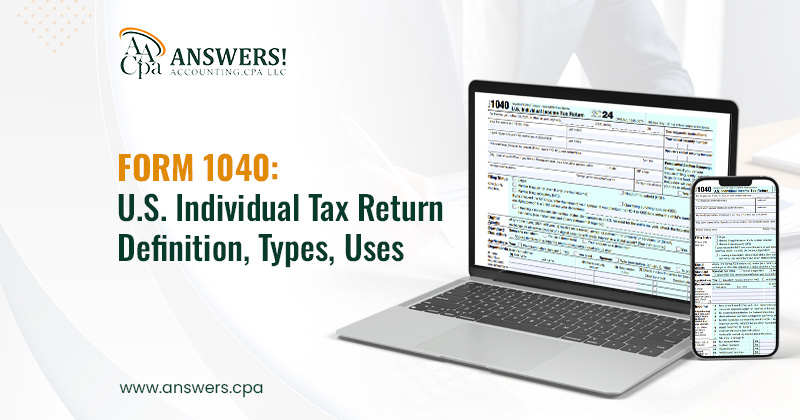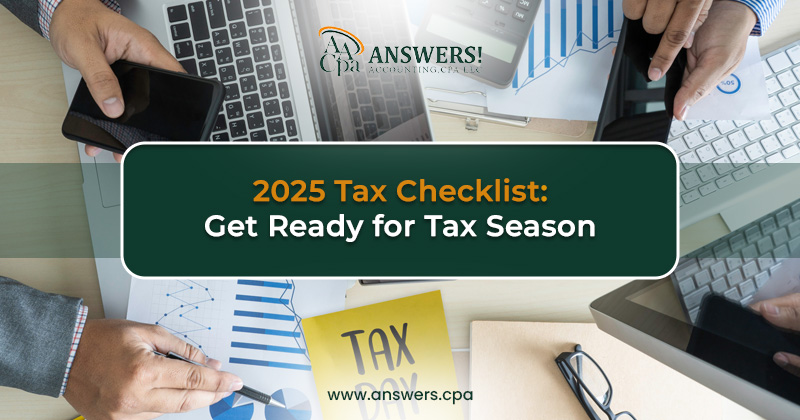IRS Form 1040, U.S. Individual Income Tax Return
Taxes are a part of life for every working person in the United States. Every year, individuals must file their tax returns with the Internal Revenue Service (IRS). One of the most commonly used tax forms is Form 1040. This blog will explain what Form 1040 is, its different types, and how it is used. By the end, you will have a clear understanding of this essential tax document.
What Is Form 1040?
Form 1040 is a tax form that U.S. taxpayers use to report their annual income to the IRS. It helps the IRS determine how much tax a person owes or if they qualify for a refund. This form includes details about a taxpayer’s income, deductions, tax credits, and payments.
Everyone who earns income in the U.S. and meets the tax-filing requirement must complete and submit Form 1040 each year. This form ensures that the government collects the correct amount of taxes to fund public services like schools, roads, and healthcare programs.
History of Form 1040
Form 1040 was introduced in 1913 after the ratification of the 16th Amendment, which allowed the federal government to impose income taxes. Over the years, the form has evolved to accommodate new tax laws and simplify the filing process for taxpayers. Initially, Form 1040 was a simple document, but as tax laws became more complex, different versions were introduced to cater to various taxpayer needs.
The Tax Cuts and Jobs Act (TCJA) of 2017 made significant changes to Form 1040, streamlining it by removing the 1040-A and 1040-EZ versions and combining everything into a single simplified form. Since then, the IRS has continued to adjust the form to make tax filing more accessible for all Americans.
Types of Form 1040
Over the years, different versions of Form 1040 have been introduced to make tax filing easier for different groups of people. Here are the main types:
1. Standard Form 1040
This is the most common version of Form 1040. It is used by most individual taxpayers. It allows people to report different types of income, including wages, salaries, business income, and capital gains. It also includes sections for deductions, tax credits, and tax payments.
2. Form 1040-SR (For Seniors)
Form 1040-SR is designed specifically for taxpayers who are 65 years or older. It is almost the same as the regular Form 1040 but has a larger font and includes a standard deduction chart. This makes it easier for seniors to complete their tax returns.
3. Form 1040-NR (For Nonresident Aliens)
Nonresident aliens who earn income in the U.S. must use Form 1040-NR. This form is for individuals who do not meet the residency requirements for filing a regular Form 1040 but still need to report their U.S.-based income.
4. Form 1040-X (Amended Return)
If a taxpayer realizes that they made a mistake on their previously filed tax return, they can use Form 1040-X to correct it. This is known as an amended return. It is useful for fixing errors in income reporting, deductions, or credits.
5. Form 1040-ES (Estimated Tax Payments)
Some individuals, such as self-employed workers, do not have taxes automatically deducted from their income. They use Form 1040-ES to calculate and pay estimated taxes throughout the year. This helps them avoid large tax bills at the end of the year.
6. Form 1040-V (Payment Voucher)
When a taxpayer owes money to the IRS, they can use Form 1040-V to send their payment. It acts as a payment voucher that helps the IRS process payments correctly.
How to Use Form 1040
Step 1: Gather Required Documents
Before filling out Form 1040, a taxpayer needs to collect all necessary documents, such as:
- • W-2 forms (showing wages and salaries from an employer)
- • 1099 forms (for self-employment income, interest, or dividends)
- • Records of deductions (such as student loan interest, medical expenses, or charitable donations)
- • Tax credits information (like education credits or child tax credits)
- • Bank account information for direct deposit of refunds
- • Documentation for IRA contributions, healthcare expenses, and mortgage interest
Step 2: Fill Out Personal Information
The first section of Form 1040 requires basic personal details:
- • Name
- • Address
- • Social Security Number
- • Filing status (single, married filing jointly, head of household, etc.)
- • Information about dependents (if applicable)
Step 3: Report Income
Taxpayers must list all sources of income, including:
- • Wages and salaries
- • Business income
- • Investment income (such as dividends and interest)
- • Rental income
- • Retirement income
- • Social Security benefits (if applicable)
- • Unemployment compensation
- • Capital gains or losses from investments
Step 4: Claim Deductions and Credits
Deductions reduce taxable income, and tax credits reduce the amount of tax owed. Some common deductions and credits include:
- • Standard deduction (a fixed amount that reduces taxable income)
- • Itemized deductions (medical expenses, mortgage interest, etc.)
- • Earned Income Tax Credit (for low-income workers)
- • Child Tax Credit (for families with children)
- • Education credits (for students and parents paying tuition)
- • State and local tax deductions
- • Charitable contributions deductions
- • Adoption credit (for families who have adopted a child)
Step 5: Calculate Tax Liability or Refund
After applying deductions and credits, taxpayers calculate the total amount of tax they owe. If they have already paid more than the required tax through paycheck withholdings, they will receive a refund. If they owe more, they must submit a payment.
Step 6: Sign and Submit the Form
Once all sections are completed, the taxpayer must sign the form and submit it to the IRS. Taxpayers can file electronically using tax software or send a paper copy by mail.
Why Is Form 1040 Important?
1. Ensures Proper Tax Collection
Form 1040 helps the government collect taxes fairly. It ensures that everyone pays the correct amount based on their income and deductions.
2. Helps Taxpayers Claim Benefits
By completing Form 1040 correctly, taxpayers can take advantage of deductions and credits, which lower their tax bills and sometimes result in refunds.
3. Required for Loan Applications
Many financial institutions require tax returns when people apply for mortgages, car loans, or business loans. A properly filed Form 1040 serves as proof of income.
4. Prevents Penalties and Legal Issues
Filing Form 1040 on time and correctly helps taxpayers avoid penalties or legal trouble with the IRS.
Common Mistakes to Avoid
- 1. Incorrect Personal Information – Small errors like a wrong Social Security number can cause delays.
- 2. Math Errors – Simple addition or subtraction mistakes can lead to incorrect tax calculations.
- 3. Missing Income – Forgetting to report income from freelance work or side jobs can result in penalties.
- 4. Overlooking Deductions or Credits – Missing out on deductions and credits can mean paying more tax than necessary.
- 5. Filing Late – Failing to file on time can lead to penalties and interest charges.
- 6. Not Keeping Copies – Taxpayers should always keep a copy of their filed tax returns for future reference and verification.
Avoid Costly Mistakes and Maximize Your Tax Benefits
Form 1040 is a crucial document for ensuring accurate tax reporting and compliance with IRS regulations. However, filing taxes can be complex and overwhelming. To avoid errors, maximize deductions, and secure the best financial outcome, expert guidance is essential.
Answers! Accounting CPA offers professional tax services to help individuals and businesses navigate the tax filing process efficiently. With expert assistance, you can ensure accurate filing, avoid unnecessary penalties, and make the most of available deductions and credits. Don’t let tax season stress you out, partner with Answers! Accounting CPA and file with confidence!
FAQs
1. Who needs to file Form 1040?
Anyone who earns income in the U.S. and meets the IRS filing requirements must file Form 1040. This includes employees, self-employed individuals, retirees, and those with investment income.
2. What happens if I make a mistake on my Form 1040?
If you make a mistake on your tax return, you can correct it by filing Form 1040-X (Amended U.S. Individual Income Tax Return). This allows you to update any errors related to income, deductions, or credits.
3. How do I know if I should itemize deductions or take the standard deduction?
You should itemize deductions if your total deductions (such as mortgage interest, medical expenses, and charitable contributions) exceed the standard deduction. If not, taking the standard deduction is simpler and often results in a lower tax bill.
4. Can I file Form 1040 electronically?
Yes, the IRS allows electronic filing (e-filing) through tax software or professional tax services. E-filing is faster, reduces errors, and allows for quicker refund processing.
5. What if I can’t pay the tax I owe when filing Form 1040?
If you cannot pay your full tax bill, you can set up a payment plan with the IRS. It’s important to file your return on time to avoid penalties and work with the IRS to make manageable payments.







